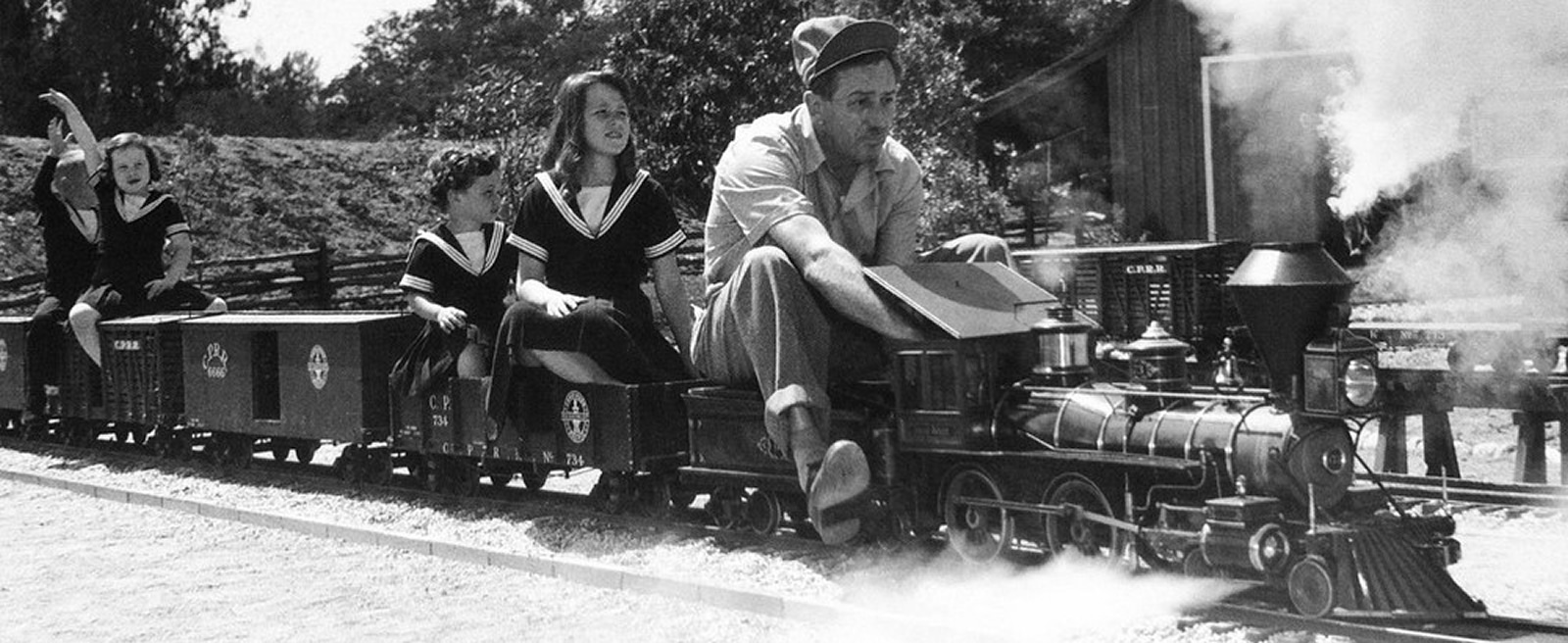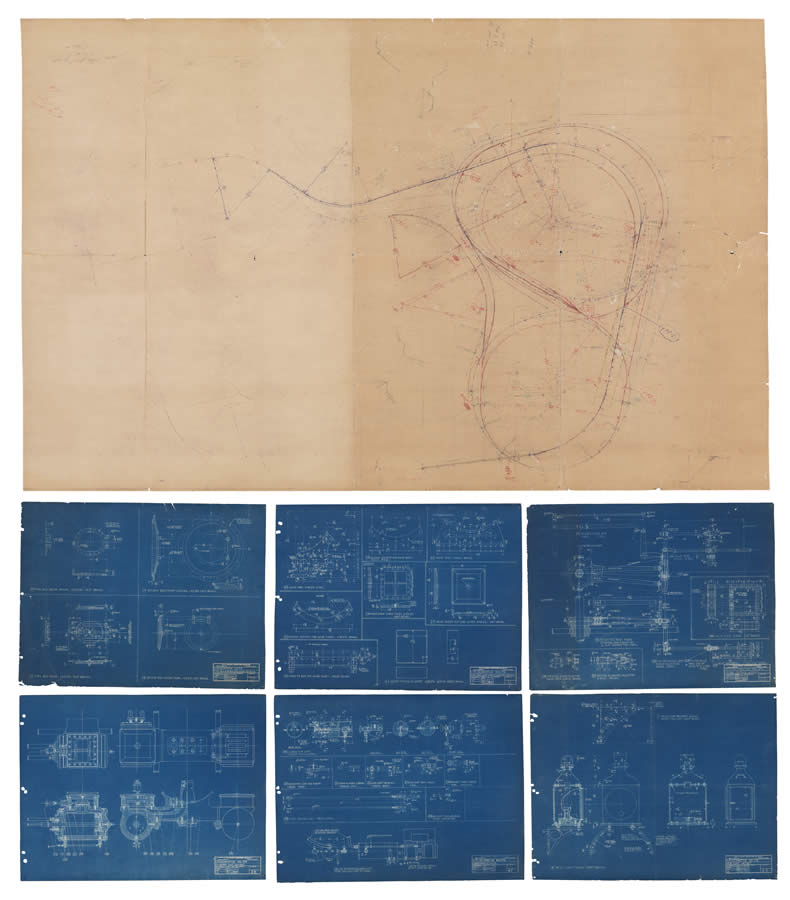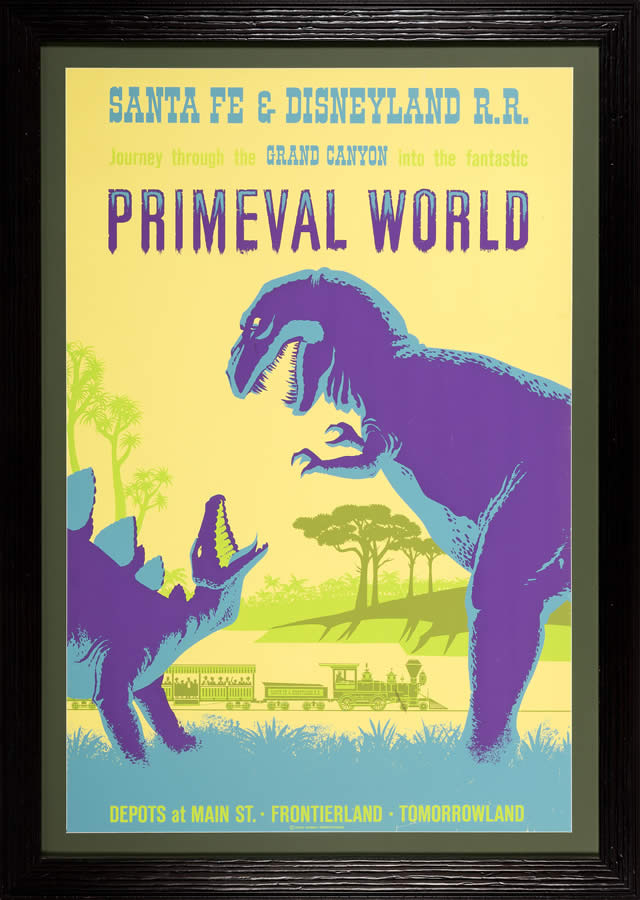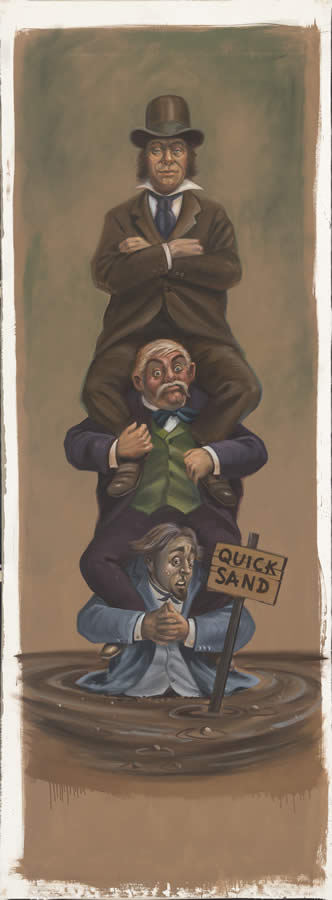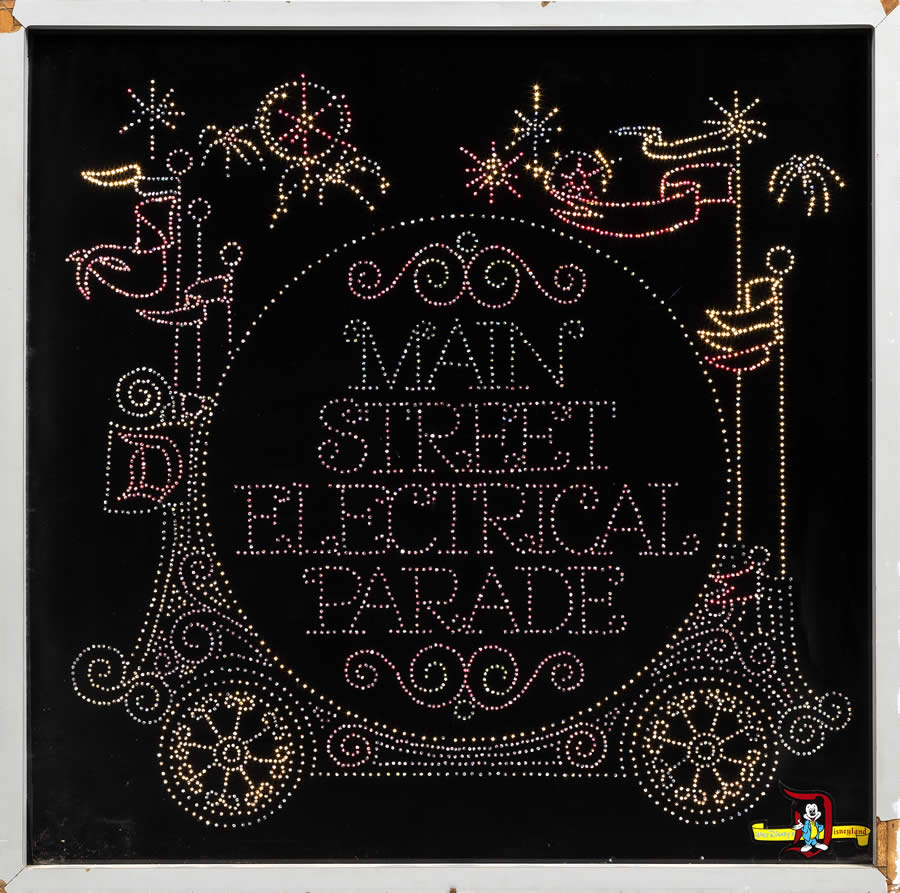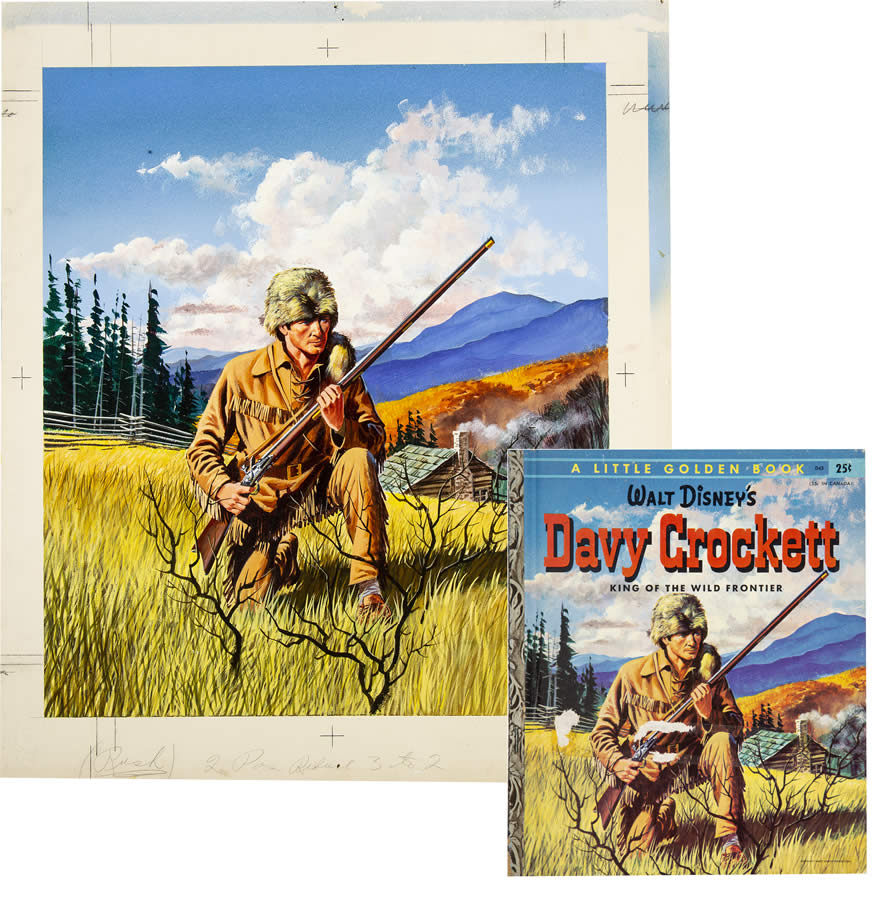PRECURSOR TO BELOVED ATTRACTION AMONG TREASURES OFFERED AT THE ART OF THE DISNEY THEME PARK EVENT
Growing up in the Midwest at the turn of the 20th century, it’s no wonder that a young Walt Disney was fascinated by the thundering steam trains that crossed the landscape – mechanical marvels that travailed iron roadways to great adventures just beyond the horizon. And as the story goes, it was on a train journey across the United States that Walt created Mickey Mouse.
EVENT
THE ART OF THE DISNEY THEME PARK SIGNATURE® AUCTION 7252
April 8-10, 2021
Dallas
Online: HA.com/7252a
INQUIRIES
Jim Lentz
214.409.1991
JimL@HA.com
A passion for steam trains permeated the Walt Disney Studios as well, with many of Walt’s top animators – Ward Kimball and Ollie Johnston among them – devoting their time to restoring and operating full-sized antique locomotives. Even Disneyland and the Disney theme parks around the world that it inspired are surrounded by steam trains, setting the stage for each guest’s adventures to come.
In 1949, Disneyland was not yet on the drawing board at the Disney Studios, much less part of the American cultural lexicon. That was the year Walt Disney purchased five acres of land in the Holmby Hills section of Los Angeles to build his family home. Far from a typical home, Walt incorporated into the design of the grounds 2,615 feet of track for the Carolwood Pacific Railroad, a 7¼-inch gauge rideable miniature train. Taking its name from the property’s Carolwood Drive address, the design and construction of the train layout and the train itself were Walt’s passions – with even the engine bearing the name Lilly Belle in honor Walt’s wife, Lillian.
As a busy studio head, it was Walt’s escape to work with his team, among them Disney Studio Head Machinist Roger Broggie, to fabricate and build the train and to design and lay the track. The result was a backyard railroad as only Walt Disney could create, meandering around curves, over a trestle bridge and through an S-curve tunnel designed as much for fun as to spare Lillian’s planned flower garden above it.
The Lilly Belle did its first test run on temporary track around the Disney Studio lot on Dec. 24, 1949, while track was still being laid at Walt’s Holmby Hills residence, and the Carolwood Pacific Railroad officially opened in 1950. From the moment of its first operation, it was a spectacle to behold, and Walt took personal pride in playing the proud host and engineer. When not at the studio, he could often be found tinkering in the train barn built on the property to house and service the Lilly Belle. Even though Walt discontinued operating his backyard railroad in 1953, it was not the end of Walt’s railroad dreams – and they were about to get a whole lot bigger.
Drawing inspiration from his backward railway, Walt set about to inspire a team of designers and creators to bring to the amusement park what his animators had brought to animated films. Just a few short months later, in 1954, Walt introduced the world to his latest dream, Disneyland. From its opening on July 17, 1955 until today, all who enter its gates are greeted by the site of Main Street Station, the glimmer of polished iron and brass in the Southern California sun, and the irresistible rumble of a live steam locomotive.
The design archive of Walt Disney’s Carolwood Pacific Railroad, the backyard hobby that gave rise to Disneyland, is among the highlights of Heritage Auctions’ April 2021 auction celebrating The Art of the Disney Theme Park. Offered is an array of art and memorabilia from Disney theme parks across the globe.
Comprised of dozens of pages of drawings and plans for the layout of Walt’s backyard railway and a complete set of original cyanotype prints for the Lilly Belle locomotive, these are the plans that Walt relied on during the design and construction of the railway and include notes in Walt’s own hand, as well as design work and renderings by other Disney Studios luminaries. Acquired by the consignor directly from the family of Roger Broggie more than 30 years ago, this archive has never before been offered to the public.
“This is truly the DNA of Disneyland, and it’s simply unmatched,” explains Jim Lentz, animation art specialist at Heritage Auctions. “There has never been something so personally connected to Walt Disney and so fundamental to the history of Disneyland at its earliest stage. Without the backyard railroad, you don’t have the dream of Disneyland. There’s something magical and personal about these plans. It’s a window into Walt’s creative process and passion.”
In addition to Disney’s train archive, the auction includes more than 20 original screen-printed attraction posters, props from iconic Disneyland attractions including an original hand-painted stretching portrait from the Haunted Mansion, signs and displays from across Disneyland and Walt Disney World, original Disney theme park concept and development art, never-before-seen documents and ephemera, and a full array of vintage souvenirs and memorabilia from Disney parks around the world. “We’re heard from so many Disney fans and collectors who want the Heritage Auctions touch on this category,” Lentz says, “and we’ve assembled quite the offering of memorabilia from more than six decades of Disney theme parks.”
If that’s not enough nostalgia for one auction, the event also features the largest collection of original Disney story book illustrations ever offered at auction. Offered lots include work by Disney Studios artists like John Hench, Bill Justice, Mel Shaw, Gustaf Tenggren, Al Dempster, Samuel Armstrong, Ted Parmelee, Campbell Grant, Dick Kelsey, Mel Crawford and Bill Justice.
“The entire history of the Disney Studios will come to life in this offering, from animated classics like Snow White, Cinderella, Peter Pan, and Pinocchio to live-action projects like 20,000 Leagues Under the Sea, Davy Crockett and Zorro,” Lentz says. “These pieces of pop-culture history span generations of childhood memories all inspired by the master storyteller, Walt Disney.”
This article appears in the Winter 2020-2021 edition of The Intelligent Collector magazine. Click here to subscribe to the print edition.

